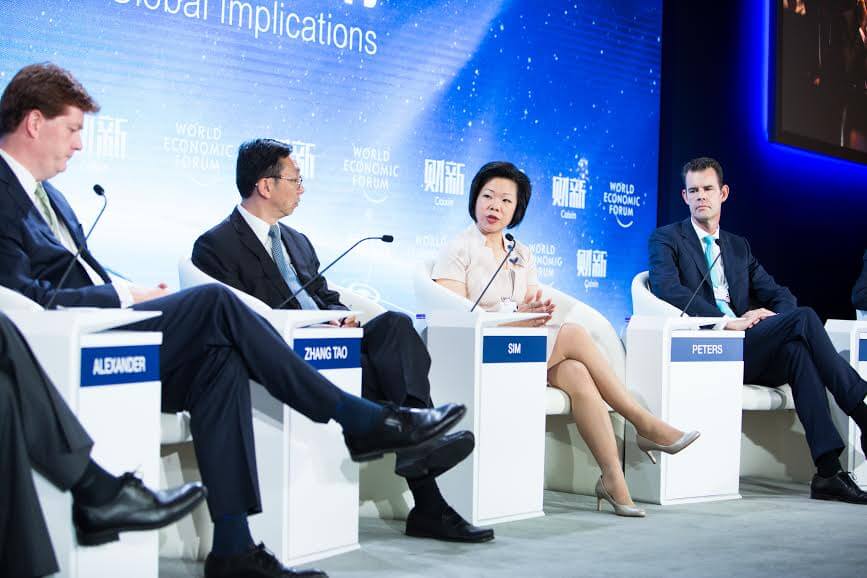Getting the financing right is key to success of China's Belt Road Initiative, say experts
Sign up now: Get insights on Asia's fast-moving developments

Senior Minister of State for Trade and Industry Sim Ann speaking on a panel discussing on Wednesday (June 28) in Dalian.
PHOTO: LIM YAN LIANG
Follow topic:
DALIEN (China) - As a mega plan spanning 65 countries and connecting some 60 per cent of the world's population, China's Belt and Road Initiative (BRI) has far-reaching implications for the next few decades, said a gathering of global leaders on Wednesday (June 28) at the World Economic Forum's summer Davos meeting here.
But the success - or failure- of the infrastructure-building plan rests largely on whether the projects make sound financial sense, which in turn hinges on getting investments and financing right, they said.
And this is one area where Singapore can play a role, capitalising on its strength as a financial centre and its ability to bring potential partners and financiers to the negotiating table, said Senior Minister of State for Trade and Industry Sim Ann at a panel discussion on the global implications of BRI, also known as One Belt One Road.e
Fellow panelist Danny Alexander, Vice-President of the Asian Infrastructure Investment Bank, pointing to a huge financing gap in many member countries, said one challenge would be to create the right environment that enables private capital to be mobilised to turn "what are very, very ambitious goals" into reality over the next 10 or 20 years.
He noted that according to a McKinsey report, the financing gap for infrastructure in Asia over the next 15 years is US$21 trillion.
"That is beyond the capacity of governments, international financial institutions alone, so mobilising private sector investment for infrastructure in Asia will be absolutely crucial."
Ms Sim said that in this respect Singapore is well-positioned to play a linking role in the Belt and Road initiative. The objectives of the government-to-government Chongqing Connectivity Initiative is to literally link the maritime part of BRI to the overland trade routes via Chongqing and Guangxi region, and to develop not just connections in transport and logistics, but also financial and aviation links with central China.
She also noted that 85 per cent of BRI countries' investment in China comes from Singapore, while about one-third of China's investment into BRI countries goes to Singapore, a testament to the strength of the island as a finance hub.
"We welcome Chinese companies looking to invest along the Belt and Road to work with Singapore as a platform for financing, particularly for infrastructure projects," she said.
yanliang@sph.com.sg

